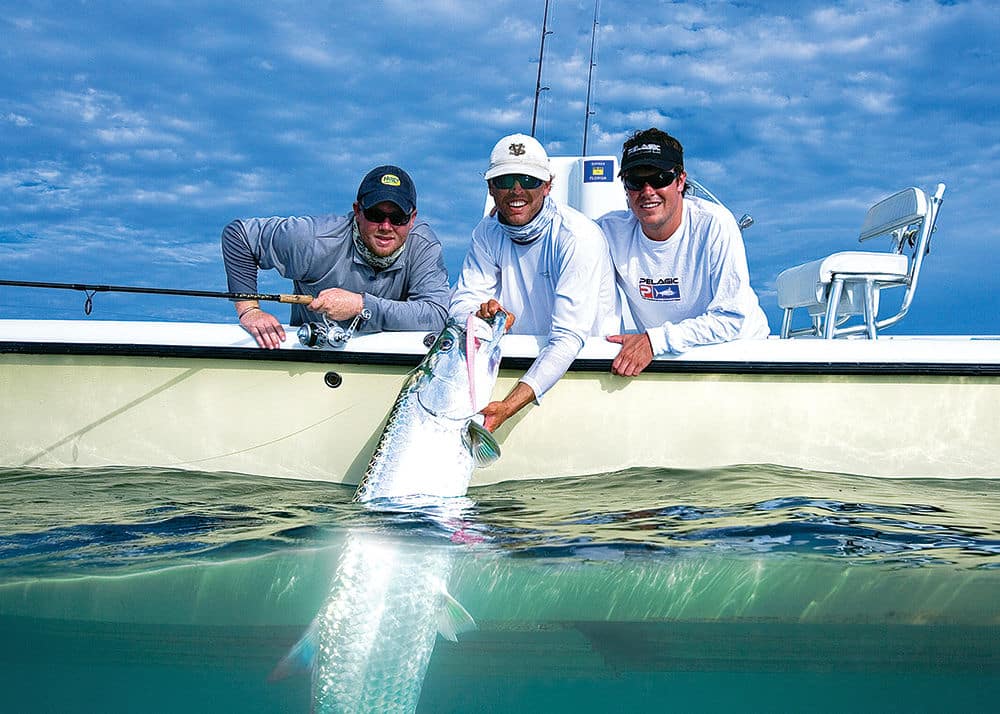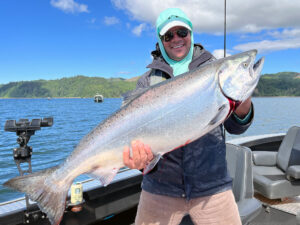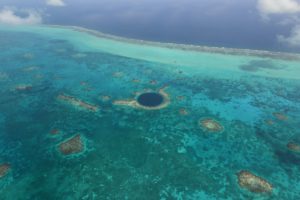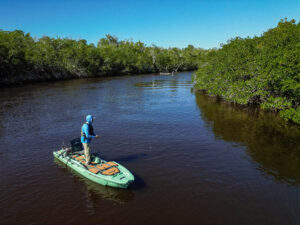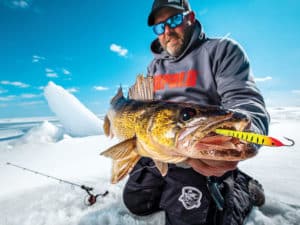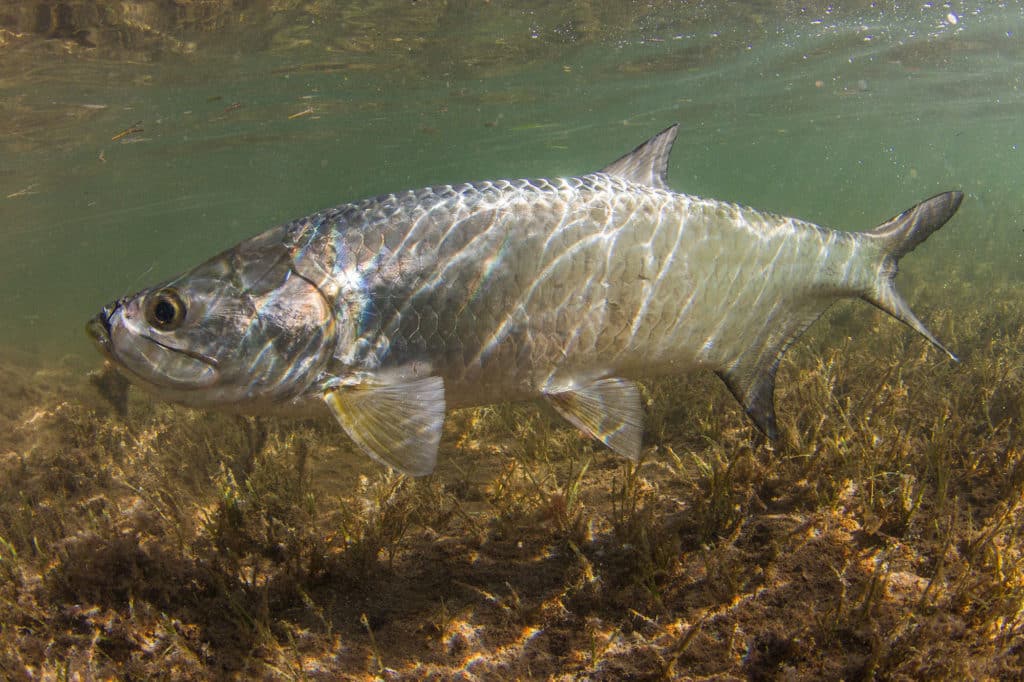
Fishermen from Virginia’s eastern shore to Brazil relish the opportunity to tangle with tarpon. In Gulf states, Caribbean ports and even west African countries, anglers catch tarpon fever, affecting those across three continents during the prime season. The current world-record silver king, caught in Guinea-Bissau, weighed 286 pounds; angler Max Domecq landed the fish in 2003 with help from his full-time guide, Patrick Sebile.
The Florida Keys provide a slew of Megalops atlanticus hot spots. One of the hottest areas in June is Key West. __________________________________________________________________________________
Key West
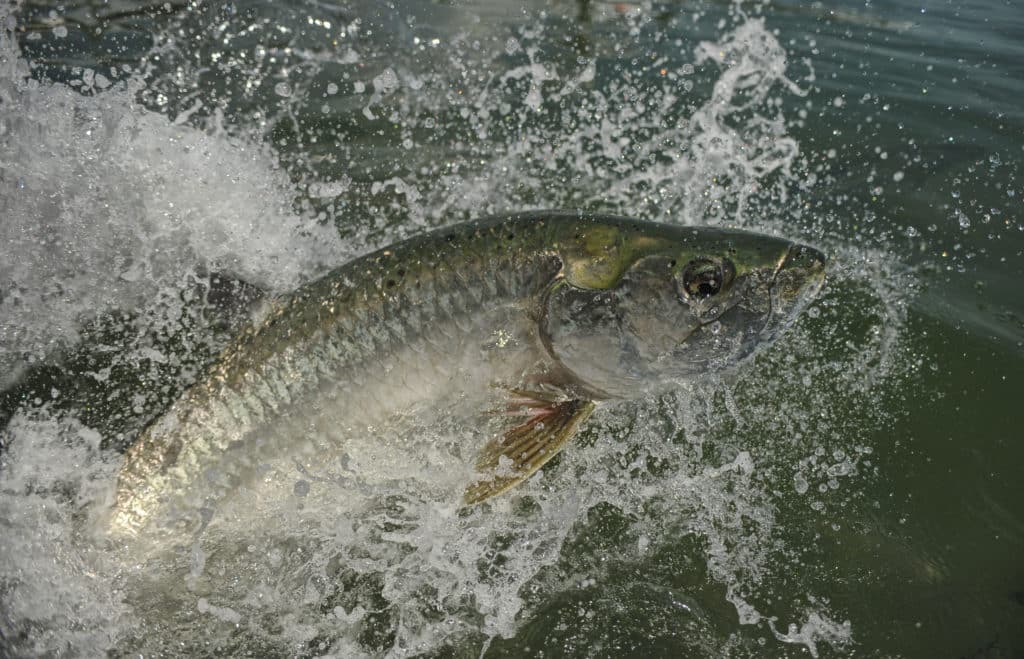
“I like to joke that they’re here in between cold fronts, so late February and early March can be iffy,” says Capt. Travis Holeman, of Key West Angling. “The top three months are definitely April, May and June.” The peak migration happens with big pushes starting at 79-degree water temps.
Channels are like highways for tarpon. “A new moon [can be] a Super Bowl for our tarpon fishing,” he says. “Tarpon can be found in channels, flats, and on the beach, all moving somewhere.”
Holeman sight-casts Hogy HDUV baits paired with Barbarian jig heads. He uses a Shimano TranX with 80-pound braid and a 6-foot-6-inch Trevala jigging rod. He mostly fishes out of Hurricane Hole Marina in Key West, but travels to different Keys launch points if the fish are on the move.
“Once you figure out what the tarpon want for a retrieve, the bite rates are insane,” he says. “To me, it’s all about the near-surface feed. I want big explosions and smiles all around. This method is active, with plenty of casting.” __________________________________________________________________________________
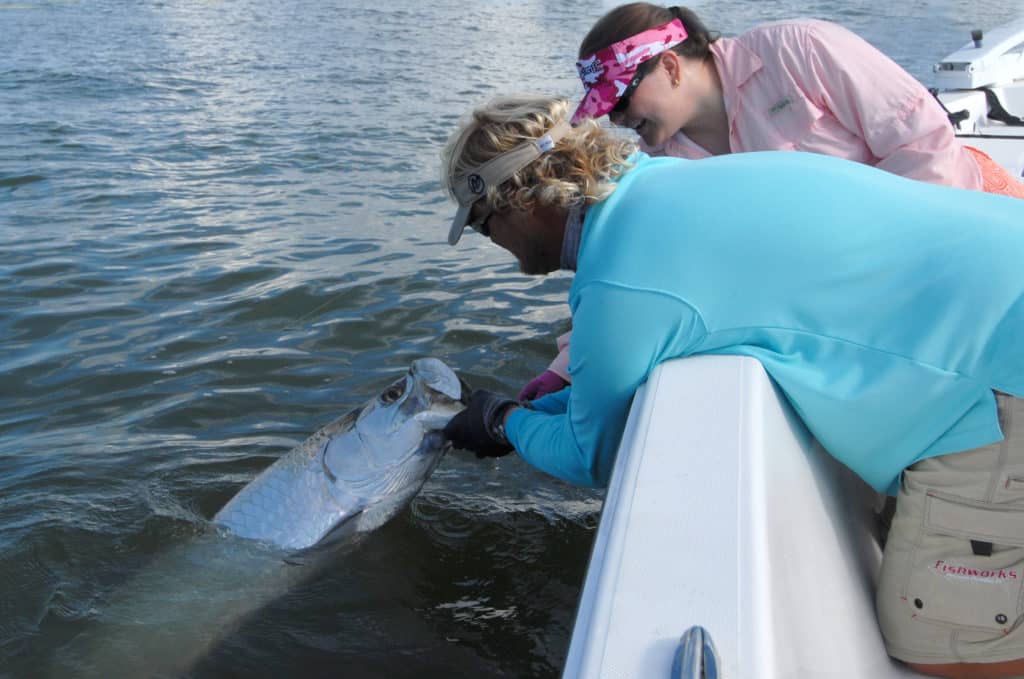
Weather. It’s the word that one of the Keys’ best-known veteran inshore guides, Capt. Tom Rowland comes back to over and over. That’s because it’s a critical factor for success and because “if the conditions are good, I can catch tarpon out of Key West almost any day of the year.
“The Key West area hasn’t developed a reputation as one the world’s premier tarpon fishing spots without good reason. “It’s a unique and awesome tarpon fishery,” Rowland says. “We can catch tarpon by just about every imaginable method and every situation in the Keys.For example, an angler fishing right in Key West harbor with an expert like R.T. Trosset, who chums them up, may hook as many as 50 tarpon in one tide.”
Impressive — if less dramatic — numbers are likely for anglers fishing popular tarpon lures or casting flies. If you want beaucoup light-tackle action, you can find lots of aggressive 5- to 40-pounders throughout the year. But for the big bruisers, those averaging in the vicinity of 80 pounds, plan to fish February and March, and some years right into June.
You certainly don’t have to travel to Africa for huge fish. “I’ve guided anglers to many tarpon over 200 pounds, and some of those on fly,” says Rowland. Also, unlike west Africa, Key West does offer opportunities to sight-cast flies to tarpon in clear, shallow water. If the heat of summer gets oppressive, try tarpon fishing at night; it’s cool and often extremely productive. Several major airlines fly directly into Key West from southeastern cities. Places to stay and eat and world-class guides with top-shelf boats abound. __________________________________________________________________________________
Bonus Spot: Key Largo
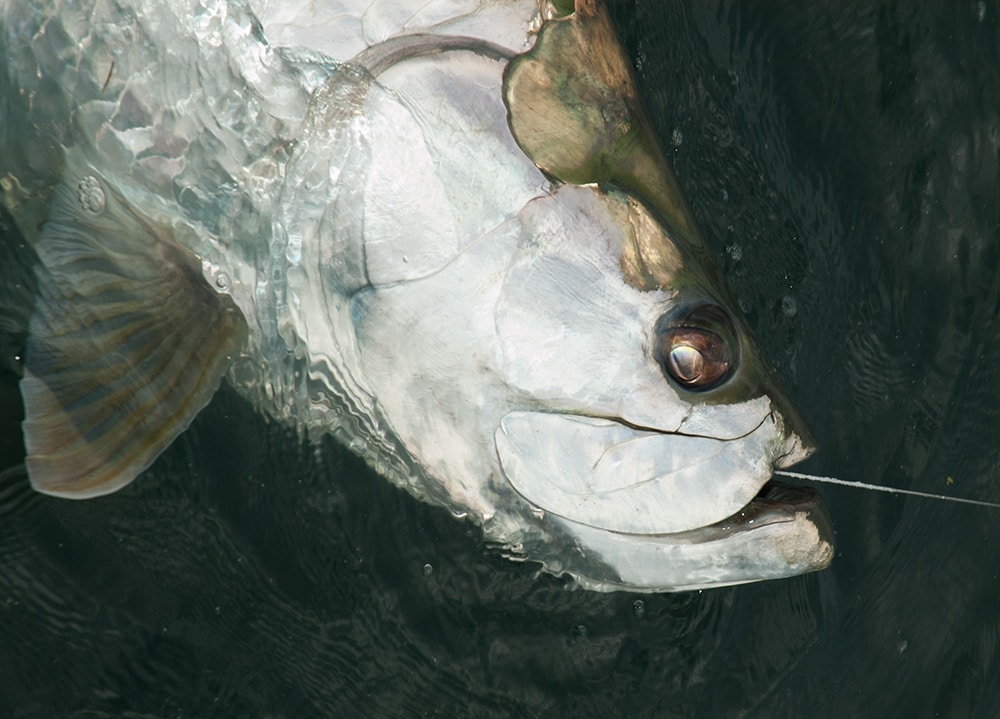
“It’s all about their spawning migration,” says Capt. Jorge Valverde, which can start as early as April and run into July.
That’s the time to look for groups of fish cruising up the coast, mostly on the ocean side (vs. Florida Bay, off the western side of the island). Valverde watches for tarpon over grass flats in water as shallow as two feet but also deeper areas, up to 20 feet deep or so.
When he does spot fish for his anglers, it might be a group of just a few — or a mob of 100. As the size of tarpon schools varies, so does the size of individual targets. Valverde says these fish will range from 10 pounds to well over 100.
“Some days, we might not see a fish,” he says. “Other days, we’ll see 200.”
Spin fishermen will hook up using crabs or shrimp, but most of Valverde’s business comes from fly guys who appreciate the outstanding sight-casting opportunities these clear waters provide. But even when larger groups of tarpon are spotted, plan on making long casts. The guide says that over the years (he’s been at this for quarter of a century), it’s gotten harder to fool spooky fish. __________________________________________________________________________________
A Quick Keys Tarpon Video
__________________________________________________________________________________
Top Tarpon Lures
